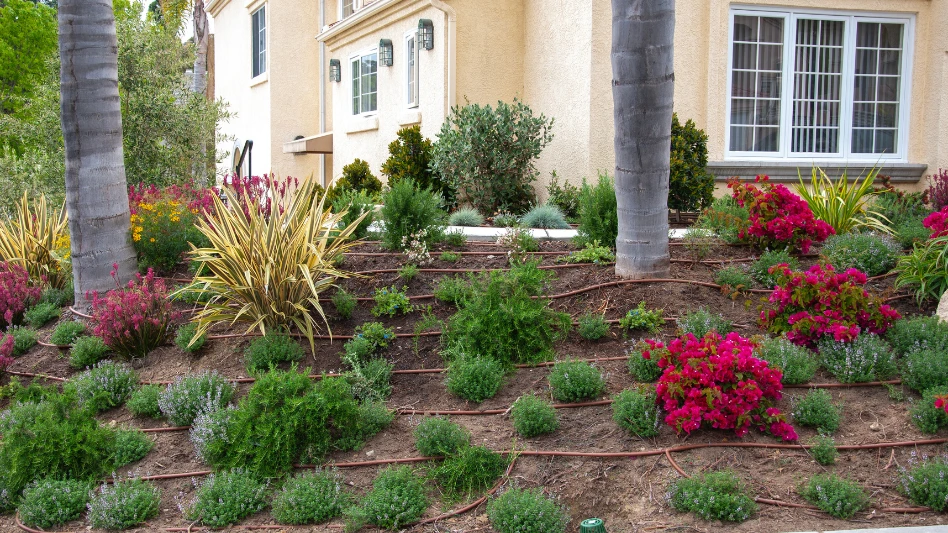 Since little is documented regarding gardeners and their ecological attitudes, practices or behaviors, a research team representing a consortium of unversities recently set out to determine how eco-friendly gardeners really are. Since little is documented regarding gardeners and their ecological attitudes, practices or behaviors, a research team representing a consortium of unversities recently set out to determine how eco-friendly gardeners really are. The results of the study were published on Texas A&M University’s Ellison Endowed Chair’s website (see box at end of story). They provided insight into what gardeners value in terms of eco-friendly products and how they may value certain aspects of sustainable plant production or certification programs. The study sought to determine whether there were differences in gardeners’ eco-friendly attitudes and behaviors, such as recycling. The researchers’ underlying belief was that some types of gardeners may be more active in environmentally friendly behavior, predisposing them to be more receptive to product innovations designed to be eco-friendly. If consumers are more eco-friendly, they may value horticulture certification programs more. Attitudes about the environment An online consumer survey was conducted focusing on the types of ornamental plant purchases made by consumers, recycling behaviors, preferences for various types of plant container materials and demographic characteristics. Survey respondents were separated into three groups: woody plant buyers, herbaceous plant buyers and consumers who purchased few/no plants. Of the six questions asked, only one difference emerged. A lower percentage of woody plant buyers agreed or strongly agreed (10.5 percent) with the statement: “Sorting household waste for recycling is too much of an inconvenience” compared to non-plant buyers (23.8 percent) or herbaceous plant buyers (25 percent). In this case, some herbaceous plant buyers were more eco-minded than non-plant purchasers. There were no differences in the percentage of the three groups who agreed or strongly agreed with these five statements:
Gardeners aren’t very different from non-gardeners in terms of their attitudes about the environment. Recycling efforts When the relationship between plant purchases for the three groups and recycling behaviors were evaluated, there were some interesting results. Although a similar percentage of all three groups had heard the term “sustainability,” a greater number of woody plant buyers and herbaceous plant buyers always or usually recycled newspapers and magazines more often than non-plant buyers. More woody plant buyers always or usually recycled aluminum cans compared to non-plant buyers, but similar to herbaceous plant buyers. Non-plant buyers had, on average, more energy-saving light bulbs in their homes (average 2.5 rating on a 7.0 scale) at the time of the survey compared to woody plant buyers (1.9) and herbaceous plant buyers (1.8). More woody plant buyers always or usually composted food and yard waste compared to herbaceous plant buyers who recycled yard waste more often than non-plant buyers. Not surprisingly, woody plant buyers and herbaceous plant buyers more often, always or usually recycle plastic plant containers, flats and tags compared to non-plant buyers. So, a greater percentage of the gardeners (woody and herbaceous plant buyers) did practice eco-friendly activities. Interest in production practices We also asked about the participants’ level of interest in different types of plant production and parts of production practices. There was slightly more interest among woody plant buyers (4.1) and herbaceous plant buyers (3.8) for organically-grown bedding plants compared to non-plant buyers (2.8). Woody plant buyers were even more interested in locally produced bedding plants (5.5) and sustainably-grown bedding plants (5.5) compared to herbaceous plant buyers (4.9, 4.3) and non-plant buyers (2.9, 2.8). Woody plant buyers and herbaceous plant buyers were equally more interested in plants grown with organic fertilizers (4.4, 4.1) compared to non-plant buyers (2.7). Woody plant buyers were more interested in plants grown in energy-efficient greenhouses (4.9) compared to herbaceous plant buyers (4.3), which was higher than the average interest level of non-plant buyers (2.8). Woody plant buyers were more interested in plants grown in biodegradable (5.4) or compostable (5.3) containers compared to herbaceous plant buyers (4.8, 4.7) which was higher still than the interest by non-plant buyers (3.1, 2.9). Both woody plant buyers (5.0) and herbaceous plant buyers (4.7) had a similarly higher interest in containers that can be recycled compared to non-plant buyers (3.0). Take home lessons There is clear acceptance that recycling and composting and other choices are good for the environment. In this survey, there were no differences in consumers’ attitudes about the environment and recycling in the six questions asked. However there were some differences in consumer behavior and preferences. Generally, more frequent recycling occurred among woody plant buyers than non-plant buyers. The behavior of herbaceous plant buyers was often similar to woody plant buyers and usually greater than non-plant buyers. Consumers who bought woody plants and herbaceous plants were more eco-friendly in their actions. Even more interesting was the higher level of interest in local and organic bedding plant production and compostable and recyclable plant containers. Horticulture professionals don’t do enough promotion about the good choices they are making for the environment. Better communication of these eco-friendly practices needs to be done. Bridget K. Behe is professor, horticultural marketing, Michigan State University, behe@msu.edu. |

Explore the July 2011 Issue
Check out more from this issue and find your next story to read.
Latest from Lawn & Landscape
- LMN partners with Attentive.ai
- Get to know the generations working for you
- Addressing addiction in landscaping
- Fairway expands national footprint with 6 acquisitions
- Graze Robotics opens new headquarters in Plano, Texas
- Addiction in the green industry
- Kress earns Sourcewell approval
- The best laid plans





